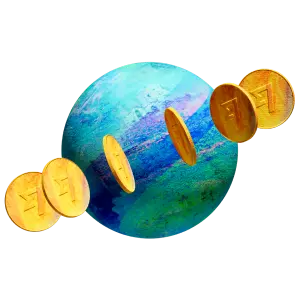IBAN checker
IBANs always follow a set format. This means we can tell if yours is valid or not, and show you what each part of it represents.
Check an IBAN
Type it in here and we’ll tell you if it’s the right format.
Example of an IBAN in Ireland
How banks create IBAN codes
Banks and other institutions create IBANs to represent individual accounts. They combine your local bank details into one string of characters - making it easy to identify your account when sending or receiving money.
IBANs usually start with a reference to the country, and end with the individual bank account details. This tool will tell you the name of the bank, extract the local account details, and show you what each section represents.

When do you need an IBAN?
If you ’re sending or receiving money internationally, most European banks will need you to use an IBAN. It’s the safest and most efficient way of making sure your money gets to where it needs to be. More banks around the world are starting to adopt this system, but you may need more details to send money to other countries.
What happens if you enter the wrong number?
Every IBAN has two check numbers following the country code. Banks use these to determine whether the IBAN is in the right format. We run the same check, so we’ll be able to tell you if your IBAN is in the right format.
Your IBAN being in the right format isn’t a guarantee that it exists. Or that it represents the right destination.
If you enter a non-existing IBAN when sending money with a bank, your bank might charge you a fee. And if the IBAN exists, but isn’t right for the destination, your bank might send your money to the wrong account. Always check the IBAN with your recipient or bank.
Common mistakes to look out for
1
Typing mistakes
IBANs are typically long, and it’s easy to make a mistake when typing them character by character. Try to copy and paste when you can.
2
Incorrect formats
When sending money online, you should always use the digital format. Some banks will reject your transfer if you use the print format, with spaces between the characters.
3
Recipient details
Banks will sometimes ask for more details. It’s important you enter these details correctly, or your transfer could be rejected — even if the IBAN is valid.
Always confirm the details with your recipient
We can tell whether your IBAN is in the valid format, but we can’t guarantee that it exists, or that it represents the intended account. This tool should help you to confirm some of the details you already know, such as the country and bank.
When sending or receiving money, always check the IBAN code with your recipient or bank.
If you think you’ve used the wrong IBAN to send money , you should get in contact with your bank right away. They may be able to cancel the transaction. If it’s too late to cancel, you might have to contact the recipient yourself and request the they return your money.
